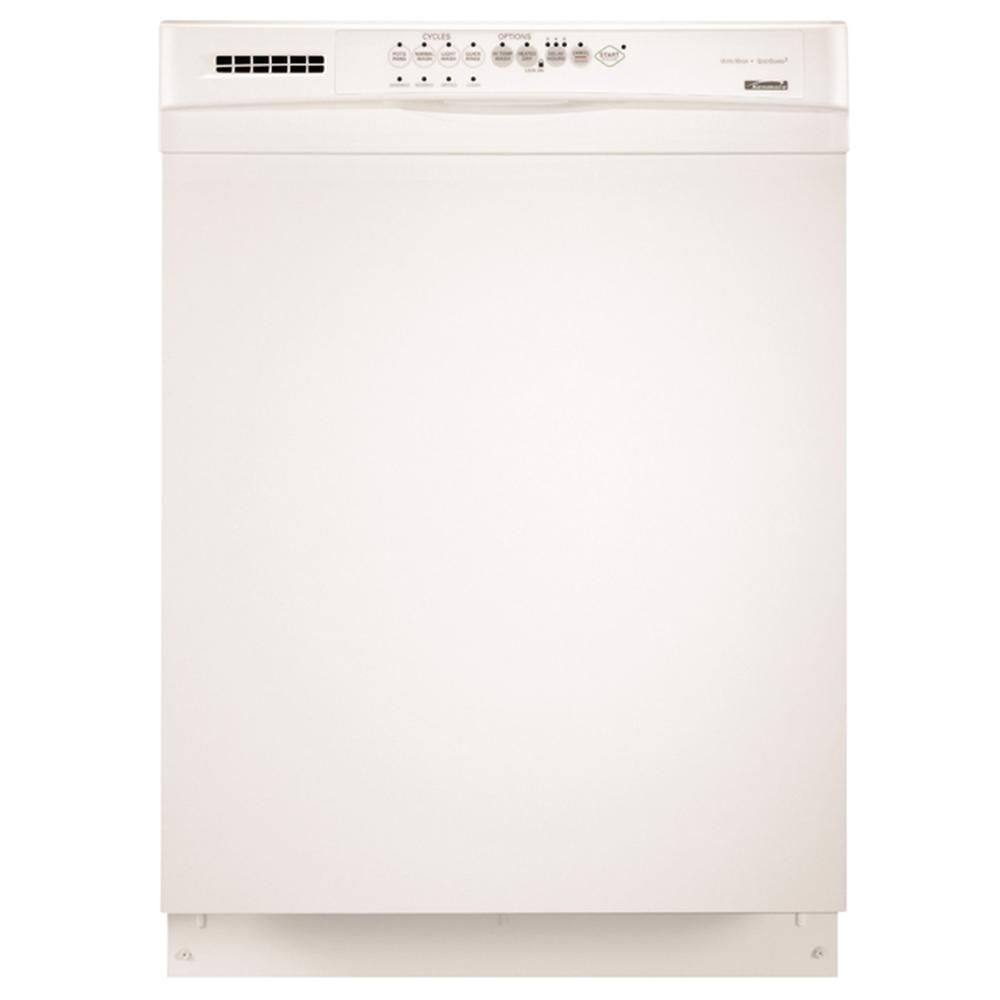Loading ...
Loading ...
Loading ...

)!)i_j!i:_i_,_,_:,:_J_!!!!iiJSiii_,_ili!!i_i_il!i!i!)_i_;l'_iiiOiii,_i;!!'i_,_ii%:i::i;_)!i!''_'_iii!_:i::;i_S
Hot water dissolves and activates the dishwashing detergent.
Hot water also dissolves grease on dishes and helps glasses dry
spot-free. For best dishwashing results, water should be 120°F
(49°C) as it enters the dishwasher. Loads may not wash as well if
the water temperature is too low. Water that is too hot can make
some soils harder to remove and cause certain detergent
ingredients not to function. If your water heater is located far from
the dishwasher, it may be necessary to run the hot water at the
faucet closest to the dishwasher to minimize the amount of cold
water in the water line.
To check water temperature
1. Run hot water at the faucet closest to your dishwasher for at
least 1 minute.
2. Place a candy or meat thermometer in a glass measuring
cup.
3. Check the temperature on the thermometer as the water is
running into the cup.
• To save water, energy and time, do not rinse dishes before
putting them into the dishwasher.
Use a delay feature to run your dishwasher during off-peak
hours. Local utilities recommend avoiding heavy usage of
energy at certain times of day.
During the summer, run your dishwasher at night. This
reduces daytime heat buildup in the kitchen.
Use a rinse aid to improve drying.
Use cycles or options that add extra heat to the wash or rinse
portion of the cycle only when needed.
If your home is equipped with a water softener, you may want
to avoid starting the dishwasher during the regeneration of
the softener, since this may contribute to poor wash
performance.
Select the wash cycle and options desired. Or press START/
RESUME to use the same cycle and options as the previous
cycle.
NOTE: If the last cycle you completed was a rinse cycle, the
dishwasher will run the last full wash cycle and options that you
selected when you press START/RESUME.
A "0" shows the steps that are in each cycle.
Water usage is shown in U.S. gallons/liters.
These models meet the ENERGY STAR®guidelines for energy
efficiency.
IMPORTANT: These sensor-based cycles may take several
hours depending on cycle selected, water temperature, and soil
level sensed.
Use both detergent dispenser sections.
Wash Main Rinse Final Dry Approx- Water
Wash or Rinse imate Usage
Purge Time (gal/L)
• • • • • 2.5 hrs* 6.9-7,8/
Rinse 26.1-29.5
Normal Wash
Use this cycle for loads with normal amounts of food soil. (The
energy-usage label is based on this cycle.) During the wash
cycle, the wash action will repeatedly pause for several
seconds.
Use both detergent dispenser sections.
Wash Main Rinse Final Dry Approx- Water
Wash or Rinse imate Usage
Purge Time (gal/L)
• • • • • 2 hrs* 5.9-6,8/
Purge 22.3-25.7
Light Wash
Use this cycle for china and crystal. This cycle uses a light
wash and gentle dry. During the heated dry, the heating
element cycles on and off.
Use main detergent dispenser section.
Wash Main Rinse Final Dry Approx- Water
Wash or Rinse imate Usage
Purge Time (gal/L)
• • • • • 1.5 hrs* 5.9-6,8/
Purge cycled 22.3-25.7
Quick Rinse
Use this rinse cycle for rinsing dishes, glasses, and silverware
that will not be washed right away.
_ DO not use detergent with this cycle.
Wash Main Rinse Final Dry Time Water
Wash or Rinse (rain) Usage
Purge (gal/L)
• 10 1.8-2,2/
Rinse 6.8-8.3
*If the incoming water temperature is less than the
recommended temperature or food soils are heavy, the cycle will
automatically compensate by adding time, heat and water as
needed.
11
Loading ...
Loading ...
Loading ...
